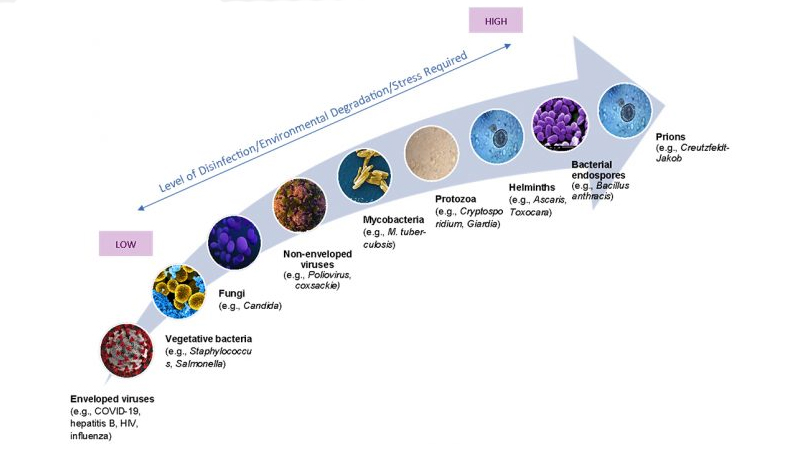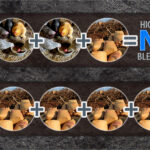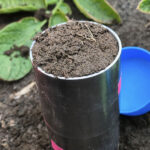 Sally Brown
Sally Brown
Editor’s Note: On February 11, 2020 the World Health Organization announced an official name for the disease that is causing the 2019 novel coronavirus outbreak. The name, coronavirus disease 2019, is abbreviated as COVID-19 — “CO” stands for corona, “VI” for virus, and “D” for disease, and 19 for 2019. The virus that causes the disease is SARS-CoV-2.
Unfortunately, in the case of COVID-19 it is your friends and coworkers who are the potential enemies and not the compost feedstocks or compost pile. There is an enormous amount we don’t know yet about this virus — the most important being how to stop it from making you sick. The second most important is how to make you better if it does make you sick.
However, from a behavior of a virus in the environment standpoint, there is plenty that we do know. Much of this knowledge is based on the behavior of viruses from the same family as SARS-CoV-2, and increasingly some of it is from the virus itself. As cities and programs react to the pandemic it is very easy for managers to overreact on the side of safety. Programs like biosolids recycling and food scrap collection and composting can be viewed as unnecessary risks and cut. Science and common sense beg to differ. This two-part Connections Column will be a review of the basics of viruses with a focus on coronaviruses. Part I covers the virus itself. From there we can go to the basics of risk assessment (Part II).
Bacteria vs. Viruses
The first step is to understand the difference between bacteria and viruses. Bacteria are living things. I wouldn’t go so far as to say that they have feelings, but they can be killed. Most of them are good guys — or at least innocuous. A few are bad guys. In healthy systems, like healthy soils and healthy bodies, there are plenty of the good guys to take out the bad guys. This is the basis for soil health, for disease suppression in compost-amended soils and for fecal transplants in your intestines. In each case the rationale is to make sure that there are both the right kind of good guys and sufficient numbers of them to take out the bad guys.
E. Coli 157 is a classic example of a bacteria bad guy. Bad guy bacteria are not loners. They travel in gangs or packs. You need a certain number of the bad guys to really cause harm and make you sick. Our traditional approach for both soils and systems is to use indiscriminate poisons to kill them all. Penicillin is an example of one of the most successful and potent of these poisons. It originated in soils. Soils are full of these types of fungi and bacteria that can ward off enemies. For people, they are typically referred to as antibiotics.
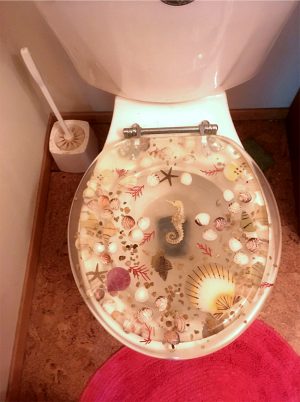 Viruses are not alive. They are strands of code. You can think of them like hijackers. They come in and take control of your cells to do their work for them. You can’t kill them as they aren’t alive. You can work to train your cells not to let them in. Like bacteria, it seems as though it takes more than just a few to really do the job. These days you read a lot about ‘viral load’, which refers to how many of these pirates you’ve been exposed to. The viruses that make us sick can be divided into two basic categories: enteric and respiratory. Enteric viruses attack your intestines. That means you spend much of your time on the toilet. That also means that the contributions that you make to the toilet (either direction) have large numbers of viruses. Exposure to this stuff is a great way to share the wealth or make other people sick.
Viruses are not alive. They are strands of code. You can think of them like hijackers. They come in and take control of your cells to do their work for them. You can’t kill them as they aren’t alive. You can work to train your cells not to let them in. Like bacteria, it seems as though it takes more than just a few to really do the job. These days you read a lot about ‘viral load’, which refers to how many of these pirates you’ve been exposed to. The viruses that make us sick can be divided into two basic categories: enteric and respiratory. Enteric viruses attack your intestines. That means you spend much of your time on the toilet. That also means that the contributions that you make to the toilet (either direction) have large numbers of viruses. Exposure to this stuff is a great way to share the wealth or make other people sick.
Respiratory viruses make you go through the Kleenex tissues. These settle in your respiratory tract — your coughing and sneezing (and breathing) are the way these move around. COVID-19 is primarily a respiratory virus. There are some cases reported in the literature of what is politely called ‘fecal shedding’ but breathing is a much greater concern. First important point: COVID-19 is primarily a respiratory virus. That means that concentrations in the wastewater systems are likely to be much lower than if it were an enteric or intestinal virus.
Delivered In An Envelope
It is also important to consider the structure of the virus. SARS-CoV-2 is certainly one special virus — the talk of the world at the moment. It is special enough that it comes to you in an envelope. It is a member of a general category of viruses that have the special code wrapped up in a lipid layer. You can think of it like one of those packages that you likely have had delivered from Amazon sometime in the last week. Other examples of enveloped viruses are HIV, hepatitis B and your standard flu.
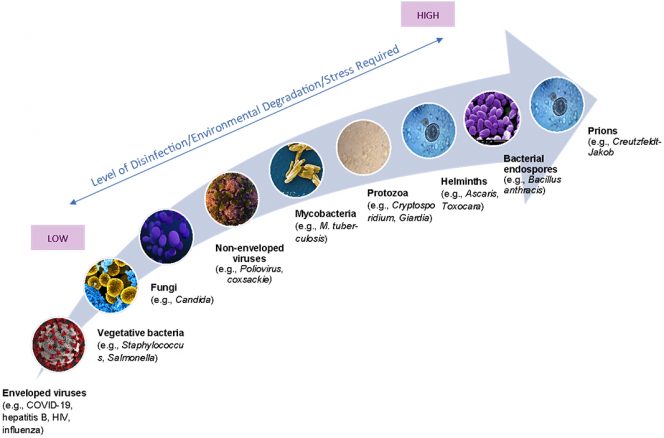 The common cold is another enveloped virus, falling into the same subcategory of these as COVID-19, i.e., a coronavirus. Notice here that the individuals listed in this general group run the gamut from annoying to deadly. That is when they get inside your body and hijack the machinery. In the environment it is a very different story. Outside of your body, enveloped viruses, almost certainly including SARS-CoV-2, are frail and delicate things. They are among the easiest to break down. The illustration (above) puts this frailty into perspective.
The common cold is another enveloped virus, falling into the same subcategory of these as COVID-19, i.e., a coronavirus. Notice here that the individuals listed in this general group run the gamut from annoying to deadly. That is when they get inside your body and hijack the machinery. In the environment it is a very different story. Outside of your body, enveloped viruses, almost certainly including SARS-CoV-2, are frail and delicate things. They are among the easiest to break down. The illustration (above) puts this frailty into perspective.
You know how when you get that package from Amazon the ratio of packing material to content is about 10:1? You shake your head in wonder at the waste of space and material but the contents are generally scratch-free upon arrival. The enveloped viruses tend to be different. If you damage the package, the contents don’t work. Be very grateful that this is the case.
Sally Brown, BioCycle’s Senior Adviser and long-time Connections columnist, is a Research Professor in the College of the Environment at the University of Washington.


